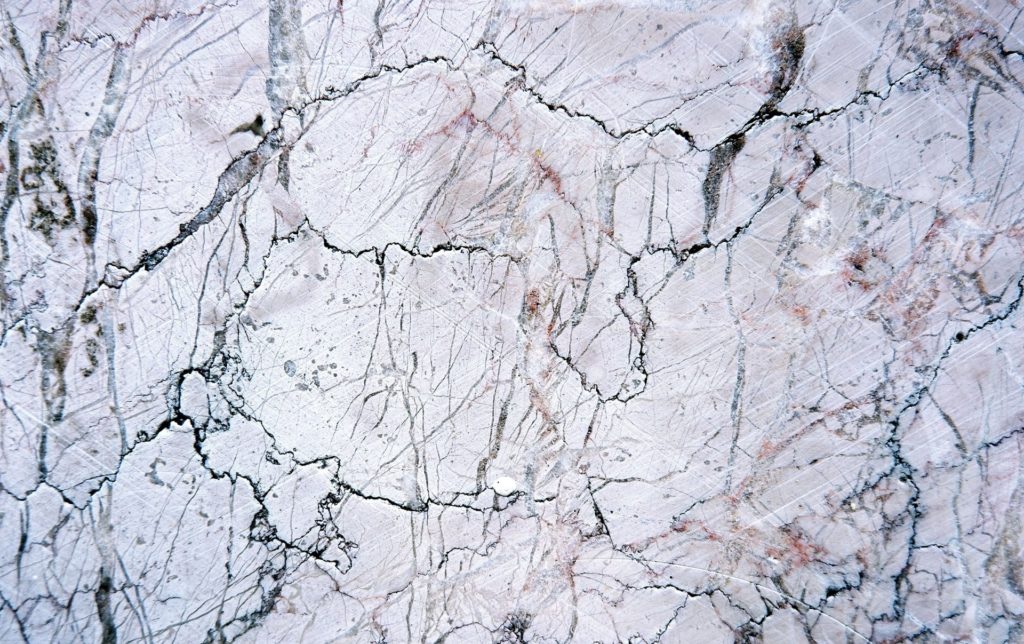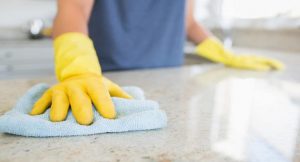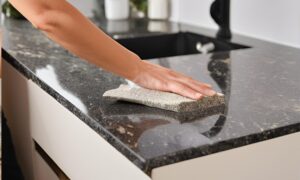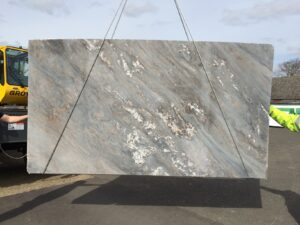Marble Maintenance
Marble is tougher than you might think, but it still requires some maintenance to keep it looking its best. The good news is that marble is easy to clean and with care it can last hundreds of years, even with a highly polished finish.
Prevention is easier than cure
We recommend using mats under very hot dishes or pans, using a chopping board and generally treating your marble as though it were a more delicate material – wood perhaps. Marble kitchen worktops are food safe and unlikely to scratch if you do use a knife directly on the surface or put your cup of tea down without a coaster so you’ve got some leeway here
Food and mud – daily care
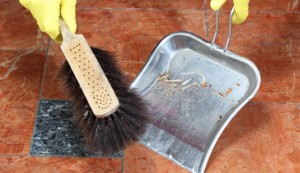 While marble itself is tough as rock, the mirror-like finish that gives it its classic elegance is more delicate. This finish relies on a perfectly smooth surface to create the gloss effect, so it can easily be dulled by pitting, micro abrasions, fine cuts or scratches. A highly polished marble kitchen worktop should not be used for food preparation directly as over time food acids and knife strikes can create dull patches and avoid putting metal or stone furniture directly on a marble floor. For the best effect, use a specialist stone cleaner to restore the polish at intervals.
While marble itself is tough as rock, the mirror-like finish that gives it its classic elegance is more delicate. This finish relies on a perfectly smooth surface to create the gloss effect, so it can easily be dulled by pitting, micro abrasions, fine cuts or scratches. A highly polished marble kitchen worktop should not be used for food preparation directly as over time food acids and knife strikes can create dull patches and avoid putting metal or stone furniture directly on a marble floor. For the best effect, use a specialist stone cleaner to restore the polish at intervals.
Patios, paths and garden tiling
Marble used outdoors is typically sealed to prevent damage. Flat slabs have less risk of damage from freezing conditions, although subsidence (often seen by rocking or wobbling tiles) can cause cracks and broken slabs. Metal or stone furniture should be avoided on a polished finish as it can scratch or dull the gloss. Remove lichen, moss and other dirt regularly.
IMG
Statues, flower pots and other outdoor decorations
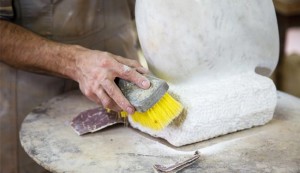 These more delicate outdoor decorations should ideally be wrapped or brought indoors during the winter months. In most cases, little harm will come to marble left out over the winter. However, there is some risk from the more extreme temperatures, so it’s best to be cautious. Whenever the temperature dips below freezing, water residue in tiny hollows and cracks in the stone (in the lines of a statue’s face, for example) will freeze and expand. Over time, this can cause significant damage. This will also reduce the build up of lichen and moss, which should be removed regularly as they can cause staining and damage.
These more delicate outdoor decorations should ideally be wrapped or brought indoors during the winter months. In most cases, little harm will come to marble left out over the winter. However, there is some risk from the more extreme temperatures, so it’s best to be cautious. Whenever the temperature dips below freezing, water residue in tiny hollows and cracks in the stone (in the lines of a statue’s face, for example) will freeze and expand. Over time, this can cause significant damage. This will also reduce the build up of lichen and moss, which should be removed regularly as they can cause staining and damage.
